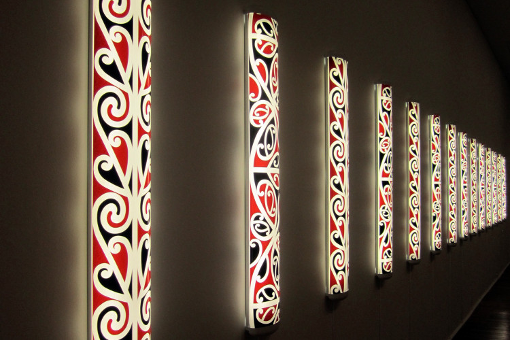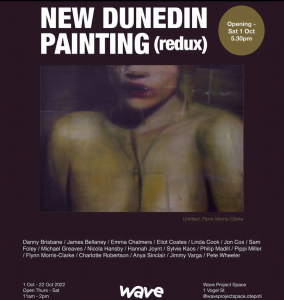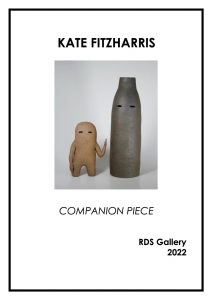Call for Articles and Creative Work to be published in a special volume on Surrealism with an emphasis on its activities and reception in German-speaking countries.
This volume on Surrealism is part of the book series Otago German Studies, edited by August Obermayer, Cecilia Novero and Peter Barton, University of Otago, Dunedin — New Zealand.
On the Series:
This book series was conceived and founded in 1980 by Dr August Obermayer who has also been editing it until the present day. Prof E. W. Herd joined in 1981 as co-editor and carried out this function until his death in 1997. The series has so far published 30 volumes. Dr Cecilia Novero became co-editor, in 2015. Dr Peter Barton joined the team, in 2017.
On the Editorial Board are Prof. Christian Grawe, Dr Norbert Griesmayer, Prof. Bernhard Greiner, Prof. Tim Mehigan, Prof. David Wellbery and Prof. Hansgerd Delbrück
CALL:
Otago German Studies is seeking contributions for a peer-reviewed volume to be published in February 2024 for the centennial of Surrealism. The volume is devoted to the notion of the OUTMODED in Surrealism.
When we speak of the “outmoded,” we intend it as art historian and critic Hal Foster once put it, namely as “the uncanny return of past states” such as the “repressed historical as well as psychic materials,” which Surrealism recovers and puts to “anarchic” use. As noted by Foster, following Walter Benjamin, “these recoveries are intended as a disruptive return but sometimes they intimate a transformative working-through too.” (Compulsive Beauty 157) Hence, in tackling the “outmoded” we are interested in its potential “revolutionary and collective charge” rather than the “parodic” or affirmative qualities the “outmoded” could also conceal.
On the one hand, our volume would like to return to the question of whether the Surrealists’ “outmoded” successfully functioned as a means to imagine alternative “modes of life” in their time, by playing “upon the tension between cultural objects and socio-economic forces, between mode as fashion and mode as means of production” (Ibid.).
On the other, and most important, the volume would also like to put this very question to Surrealism’s own practices of resistance and refusal (Surrealist Sabotage), including the “outmoded,” from our contemporary perspective. In other words, we would welcome scholarly as well as creative interpretations of how what appears outmoded in Surrealism itself from today’s perspective, in fact, irrupts with new momentum into our “rationalized” lives, and –as the “outmoded” for the Surrealists– might now have the power to disrupt our every day in uncanny ways. Foster argues that „artisanal relics“, „old images within bourgeois culture“, „outdated fashions“ and „outdated spaces“ are citations from capitalism that subtly attack „the socioeconomic complacency of its present moment“. If this is so, where might we today find collective forms of the ‚outmoded‘ such that they bear the power of the utopian and the nonsynchronous, without being redemptive or nostalgic?
We welcome essays or other creative work (photographic essays, poems, short stories, etc.) that deal with the “outmoded” both as a concept and an engagement with or an experience of space, objects, texts, myths, and images beyond the original surrealist use of the term are welcome. Please make explicit reference to the emergence and adoption of the “outmoded” within the Surrealist movement. In addition, we are particularly interested in contributions that may consider the “outmoded” and/or any of its interpretations in work by Surrealism-inspired authors/artists in the German-speaking world, whether active today or in the past.
Please submit your 300-500 word abstracts with 5 keywords by February 15, 2023 to:
Otago German Studies, attention of the Editors: cecilia.novero@otago.ac.nz; peter.barton@otago.ac.nz
Final contributions (5000-6500 words more or less, including works cited and footnotes) for peer-reviewing are due June 30th, 2023. Final versions following the peer review are due no later than November 1, 2023. The volume is scheduled to appear online in 2024. Online, peer-reviewed, open-access publication.
Call for Papers: CAMERA STYLO 5
Approaching Extinction: Anthropological and Environmental Encounters in Literature and Cinema
Sydney University and Online, 12–14 July, 2023
Deadline for submission: 15 March, 2023
The Sydney Literature and Cinema Network welcomes proposals for single papers, audio-visual essays and pre-constituted three-person panels on the topic of ‘Anthropological and Environmental Approaches to Literature and Cinema’.
In the wake of the global environmental crisis, we welcome contributions that address the capacity of art to illuminate, challenge, and inspire researchers and practitioners to address the existential threat of our climate emergency.
We invite responses to this theme across the broad spectrum of aesthetics, politics, philosophy, and practice-based research.
The Sydney Literature and Cinema Network was created in 2015 and has convened four successful international conferences and several symposia. It brings together researchers from Australia, the US, the UK and across the globe to examine the interconnections between mediums, technologies, expressive modalities and representational forms.
The Sydney Literature and Cinema Network is seeking a variety of applications to present on the themes of the conference that may include:
- Eco-politics
- Eco-philosophy
- Eco-aesthetics
- Eco-fiction
- Post-humanism
- The Anthropocene
- Technological Futures
- AI and the Environment
- Cultural Anthropology
- Environment and Culture
- The Sovereignty of Environmental Communities
Guide for Authors:
We welcome 20-minute papers, video lectures and essays, pre-organised panels (can be longer than twenty minutes), forums and other presentations on these themes and more.
- Please submit a 300-word abstract and a short biography by Wednesday March 15th 2023 (AEDT) to camerastylo5conference@gmail.com
- Panels should include a short abstract addressing a common theme in addition to individual abstracts
Presenters at CS5 will be invited to submit papers for the inaugural special issue of the international journal Camera-Stylo: Intersections in Literature and Cinema.
New Dunedin Painting (redux)
Exhibition New Dunedin Painting (redux) is co-curated by Cultures, Histories and Identities Research Network member Michael Greaves. Its catalogue features writings from Ed Hanfling and Leoni Schmidt.
For more information click on the following links:
Wave Project Space Facebook page
Instagram Wave Project Space.Otepoti
Kate Fitzharris: Companion Piece
Publication News
The current issue of ART NEW ZEALAND includes the following articles by our Research Network members, Joanna Osborne and Ed Hanfling. Congratulations to both!Joanna Osborne, ”Allie Eagle (1949-2022),” Art New Zealand 183 (Spring 2022): 55–57.Edward Hanfling, review of ”Deborah Rundle: ’Tomorrow is Today Now,’” Art New Zealand 183 (Spring 2022): 65.
Research Seminar, Wednesday, September 21, Otago Polytechnic, 5:30-7:00 pm
Wednesday, September 21, 2022
Room F209, F Block, Otago Polytechnic, Forth Street, Dunedin: 5:30 pm – 7:00 pm
YOUNG GUNS RELOADED:
RE-EVALUATING THE CONTEMPORARY MĀORI ART OF THE 1990S
Ed Hanfling, Dunedin School of Art

Michael Parekowhai (Ngā Ariki Kaiputahi, Ngāti Whakarongo), The Bosom of Abraham, 1999 Screen printed vinyl on fluorescent light housings
Collection of the Dunedin Public Art Gallery
In 2001, Manuka Henare wrote: “Māori art is vitalistic in its expression of religion and philosophy, particularly where it is the intention of the artist to enhance vital potential. The art is said to be alive.” It is unlikely that he had in mind the work of the “Young Guns” – the artists who became identified with Contemporary Māori Art in the preceding decade, the 1990s. Shane Cotton, Jacqueline Fraser, Michael Parekowhai, Lisa Reihana and Peter Robinson enjoyed critical acclaim for work that was irreverent and referential, but also provoked debate about the extent to which their art could be seen as “Māori art” or consistent with the “vitalistic” basis of Te Ao Māori. This seminar considers the metaphysical dimensions of 1990s Contemporary Māori Art, activated through recontextualisation and reappraisal (as in the recent Auckland Art Gallery Toi o Tāmaki exhibition Toi Tū Toi Ora), while suggesting that there is value in holding on to the humour and calculated impropriety that initially gave the work its vitality.
Ed Hanfling is a prolific Pākehā critic, art historian, and curator who teaches at the DSA. His research focuses on judgement and value, modernist abstract art, and 20th-century art in Aotearoa New Zealand. Among his books are 250 Years of New Zealand Painting (co-authored, Bateman 2021) and texts on Milan Mrkusich and Ian Scott.
They Came to Me in the Night: Selected Works by Wesley John Fourie
This new issue of the Occasional Essay Series, They Came to Me in the Night: Selected Works by Wesley John Fourie, includes essays by Visual Studies Research Network members Bridie Lonie and Alistair Fox.
Lonie, Bridie and Alistair Fox. They Came to Me in the Night: Selected Works by Wesley John Fourie. Dunedin: RDS Gallery. ISBN: 978-1-99-117301-0
A word from our convener…
Tēnā koutou!

Associate Professor Cecilia Novero
I am Cecilia Novero, Associate Professor at the University of Otago, in the Programme of Languages and Cultures, and this is the first Blog post of our Network of Cultures, Histories, and Identities in Visual Studies.
Welcome to our Blog!
By way of introduction, let me briefly introduce myself: Italian of birth, after graduating with an MA from the University of Turin, and following a year-long stay in the former German Democratic Republic (East Berlin), I moved to the US for my doctoral studies at the University of Chicago, in the 1990s. After holding various positions in tertiary education in the US, I arrived in New Zealand / Aotearoa in 2008.
My academic interests have always been animated by my deep-seated passion for modern and contemporary art, especially the historical Avantgarde and the neo-Avantgarde movements in Europe and the US, and performance art. I pursued these interests through professional and academic work (from employment at Allemandi & Co, in Turin via the Italian Cultural Institute and the Renaissance Society in Chicago, through my own scholarly research, and my collaborations on editorial boards of visual culture journals, etc.
In Dunedin, some of you might have met me through my participation in the research activities of the Dunedin School of Art. Some might have spotted me at one or other exhibition’s opening. My connections with the Dunedin School of Art have evolved slowly over the years thanks to the events organized by the School, whether seminars, conferences, exhibitions, or workshops and international symposia.
The University of Otago too used to have a vibrant Programme of Visual Culture –thanks to Prof Hilary Radner. Unfortunately, it no longer exists due to the closure of the Programme of Art History a few years back. Because, however, our love for the arts at University has not subsided and, in fact, our connections with the Dunedin School of Art and the arts in Dunedin more broadly in Dunedin have only flourished since, the time has come for us to celebrate our shared interests and to solidify our long-standing connections and activities through a formal “network”. So here we stand now, ready for new collaborative undertakings.
This blog is thus intended to share information, ideas, suggestions, and updates on your work, short articles, or other media links, among all Network’s members. Feel free to contribute your knowledge and experience about the arts and the art worlds that have shaped the cultural life of Dunedin, of the country of New Zealand, and also of those other places that we have come to appreciate on our personal and/or professional journeys.
Thank you for your attention, I look forward to reading your thoughts and comments! Cecilia Novero, PhD
PS: to start sharing links, here is a link to the video recording of a keynote presentation I held on zoom, in 2021 on the occasion of a city-wide series of events devoted to Smell and sponsored by the Künstlerhaus Bremen. (Note: it starts with an introduction in German but the talk is in English)
CONTACT:
Cecilia Novero, Associate Professor, University of Otago;
Hilary Radner, Emeritus Professor, University of Otago;
Federico Freschi, Professor, Otago Polytechnic
Coordinator and Multimedia Editor: Dr Radhika Raghav
EMAIL: visual-studies@otago.ac.nz





